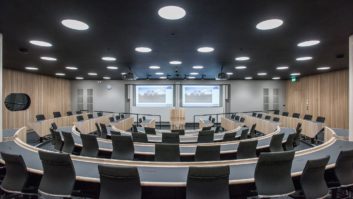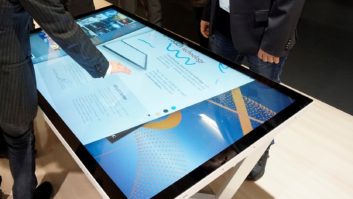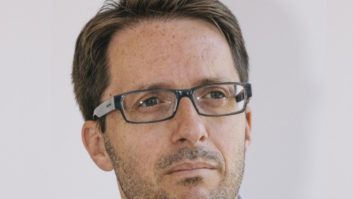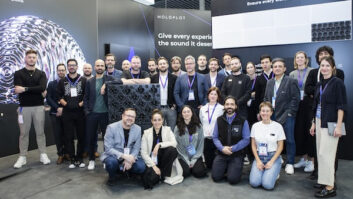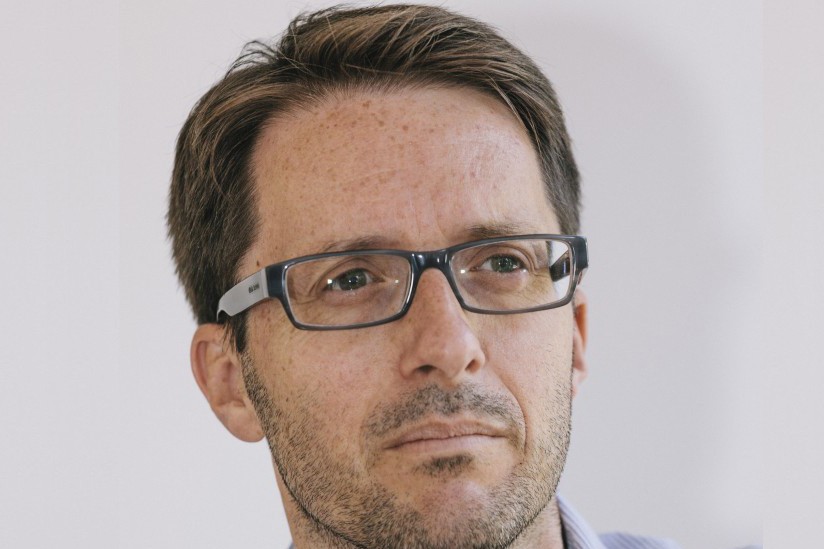
As AV collides into IT things become more exciting – and more complicated, says Rob Lane.
During ISE’s opening panel discussion, ‘IT in AV: Interconnecting for Smart Solutions’, discussion moderator and Wired UK’s editor-in-chief David Rowan discussed how AV and IT are colliding in today’s breakneck speeds of technological advancement, and how sensors in particular are bringing the AV and tech worlds together.
“If you think AV is going to be what it was last year, it’s all going to change very quickly,” said Rowan. “You’re in a very exciting moment of two worlds colliding: the sensor-connected world colliding with the storytelling tools of audiovisual. I think that’s a big moment of potential growth for a lot of people’s businesses here.”
Moore is more
Rowan name-dropped Moore’s Law, often seen as the reference point and explainer as to how quickly technology has been advancing in the past half-century: “The exponential curve that is the Moore’s Law idea that processing power keeps doubling every 18 months to two years? It is still happening, it hasn’t reached the limits of physics. And it’s going to hit the AV world in all sort of interesting ways.”
He added that in a connected world where everything is online (“nothing is offline any more”) we’re on a Moore’s Law curve – particularly for sensor technology, which is, pretty much, at the beginning of its technological lifespan. In signage for instance, the use of sensor tracking “merging with the display of information” is in its infancy, “because we are still at that exponential growth curve.”
In 1965 Gordon E Moore, who was co-founder of what was to become the Intel Corporation in 1968, made the observations that became known as Moore’s Law. Electronics magazine had asked him to write an article predicting what would happen in the semiconductor component industry in the subsequent 10 years.
Moore looked at all of the elements being used in chips at the time (approximately 60 transistors, resistors, capacitors and diodes) and based on their use in the preceding years, concluded that the semiconductor industry would double elements every year for 10 years until they hit 60,000 per chip.
Ten years on from this and his prediction was proved to be accurate, prompting a colleague to coin the term ‘Moore’s Law’. But Moore wasn’t done, and revised his prediction to a doubling of elements in a chip every two years, and the Law eventually became a driving force in itself, encouraging manufacturers to plan development and set R&D targets to keep pace with it – even today!
Moore’s Law has determined our technological reality and – as David Rowan asserts – continues to do so at a faster rate than ever.
You’ve only got to look at the pace of interactive technological advancement since Minority Report made its bold visual predictions for interactive tech in 2002 – a lifetime away in technological terms, and a full five years before Apple launched the iPhone.
It took us a few years to catch-up with Spielberg’s vision – advised at the time by a future-gazing John Underkoffler, now Oblong’s CEO – but now things are racing along at Moore’s Law pace. Virtual reality, gesture interaction and whatever it is that the $1.3million-invested wizards at Magic Leap are leading up to (“some kind of display technology”, according to Rowan): AV and IT are converging at pace in our über-networked, über-connected world.
Potential pitfalls
Great news for AV, of course. But there are potential pitfalls ahead, as those AV integrators with no head for IT are beginning to find out. As Rowan explained at the RAI: “Once you network everything, there is vulnerability.” As AV and IT continue to converge and the 20-years-established, corporate demands on IT companies (security, security and security!) become more applicable to AV businesses, we’re sure to witness a sea change in the AV industry; one that will almost certainly result in a reduction in traditional AV integrators plying their trade. Survival of the IT fittest, perhaps.
In the connected world of the Cloud, security is key. As John Chambers, former CEO of Cisco, once commented: “There are two types of company: those who have been hacked, and those who don’t yet know they have been hacked.”
